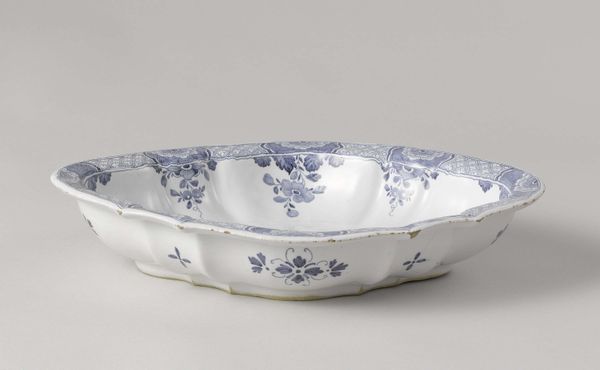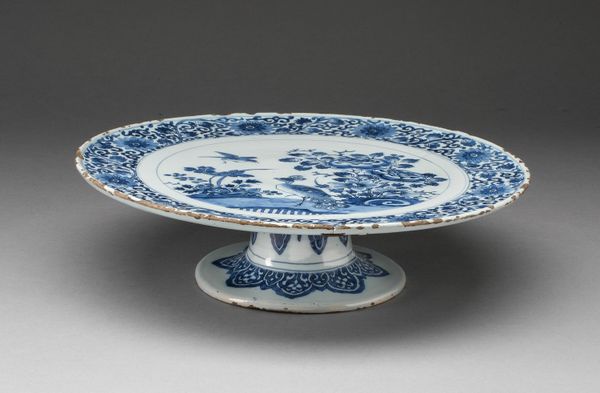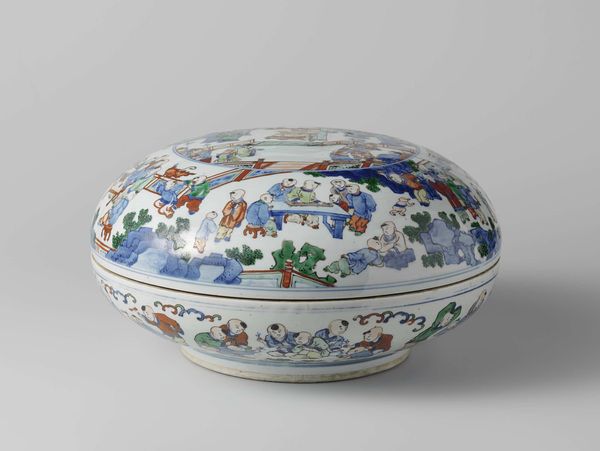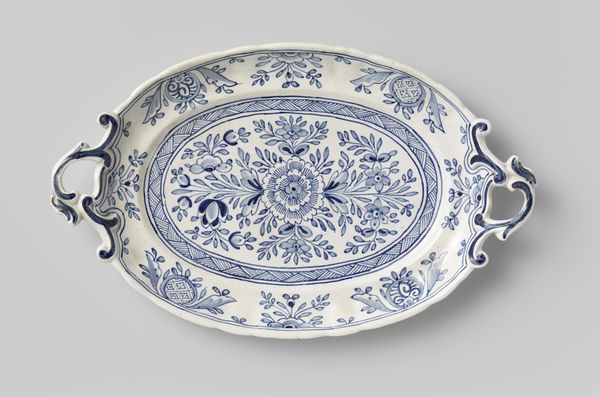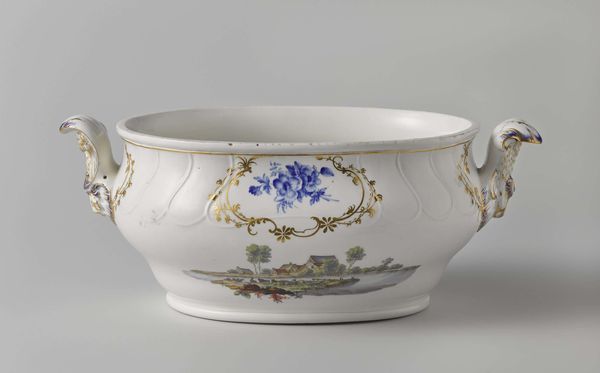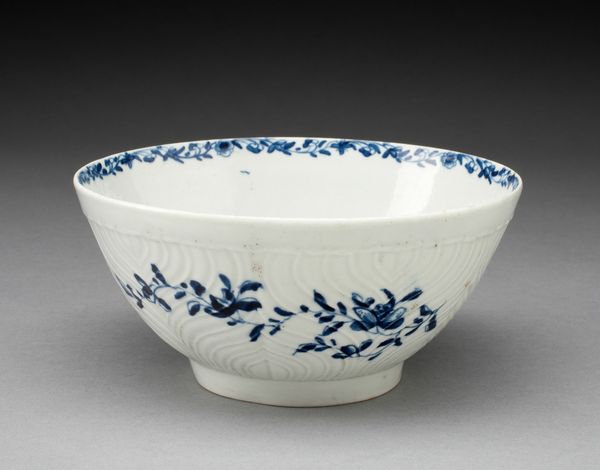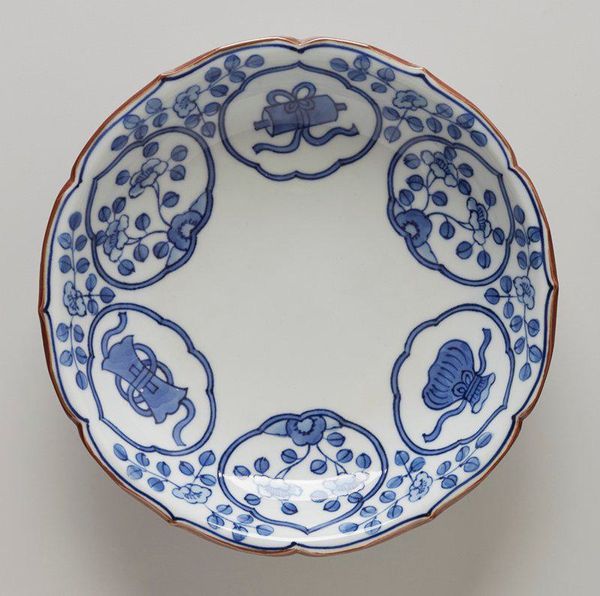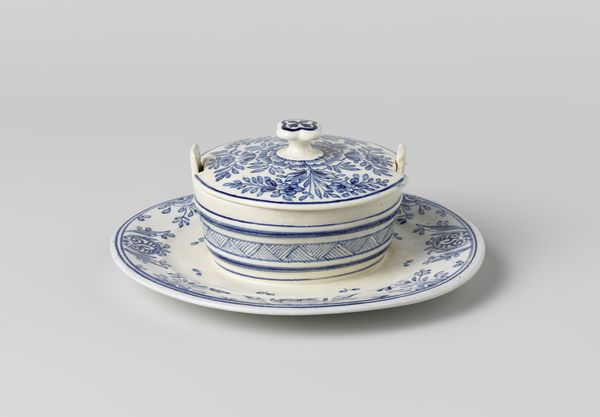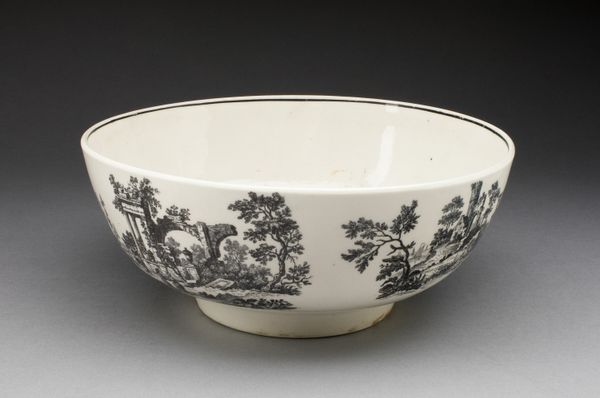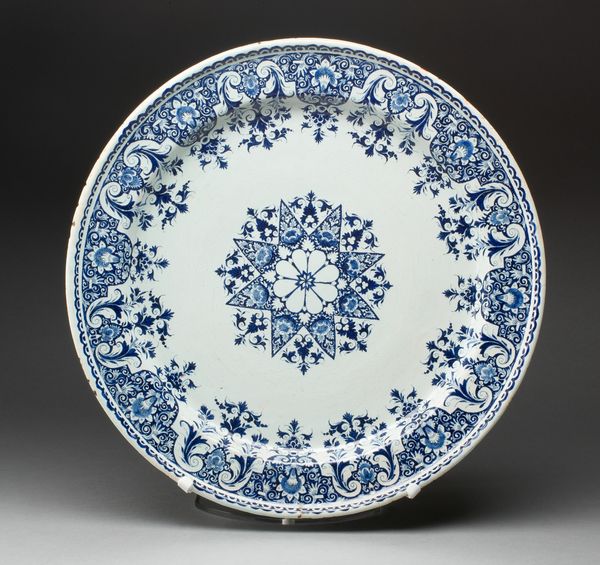
ceramic, earthenware
#
baroque
#
ceramic
#
earthenware
#
stoneware
#
ceramic
#
decorative-art
Dimensions: height 9.6 cm, width 37.2 cm, depth 25.5 cm
Copyright: Rijks Museum: Open Domain
Here is a faience foot bath painted with floral and foliage motifs made by Pierre Clérissy in the 17th or 18th century. Clérissy belonged to a family of potters in Moustiers, France, where the production of faience, or tin-glazed earthenware, flourished due to royal patronage. The bath’s delicate blue patterns and lion’s paw feet speak to the intersection of wealth, status, and personal hygiene of the aristocracy. It was during this time that cleanliness shifted from a spiritual practice to a status symbol, reflecting emerging social hierarchies. While only the elite had the means for bathing, the depiction of floral motifs provided a sense of being in nature. Despite its beauty, it's important to note that faience production relied on exploitative labor practices, from mining raw materials to the workshops themselves. Although beautiful, pieces like this foot bath also speak to the complicated legacy of luxury and labor.
Comments
No comments
Be the first to comment and join the conversation on the ultimate creative platform.
